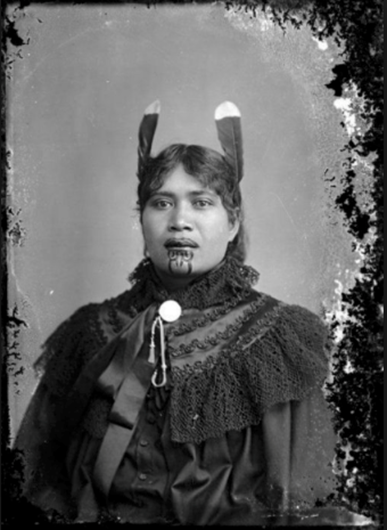Dr. Maia Nuku is the Evelyn A. J. Hall and John A. Friede Associate Curator for Oceanic Art at the Metropolitan Museum of Art. Nuku was born in London and is of English and Maori (Ngai Tai) descent. Her doctoral research focused on early missionary collections of Polynesian gods and their extraordinary materiality, which sparked an interest in drawing out the often eclipsed cosmological aspects of Oceanic art.
On June 30, NMWA welcomes Nuku as she takes part in FRESH TALK: Adorning Wakanda—Accessory to Action, a conversation about the aesthetics of gender equity. We asked her three short questions to get us thinking:
What is one experience, project, or person that made you recognize that you were doing important work?
Being of Maori descent has impacted my curatorial practice in the sense that, over time, I’ve moved away from the idea of the gallery as simply a place where we present art from a particular region. Instead, I’ve shifted towards an understanding of it as a place of encounter: a place to dialogue and confront complex colonial histories. I prefer to approach the galleries as a place to host in the manner that Pacific people are accustomed to do. In this way it becomes a very active and dynamic space. When I host Maori and Pacific islanders in the galleries and see that they feel comfortable in the space and that they’re moved to engage with their ancestors naturally just as they would at home, I feel that we are on our way to getting something right. It’s encouraging to feel the warmth of their response and the excitement they feel at sharing their culture with visitors from around the world.

Can you describe a moment in which you realized the power of adornment?
In my early 20s, I visited an exhibition of early portraits of Maori women called Moko: 19th Century Portrait Photographs of Maori. It featured large black-and-white studio portraits taken in the 1870s by photographer Samuel Carnell in Napier, New Zealand. Many of the women photographed were from the Ngati Kahungunu iwi (tribe) and, seeing the pakeha (European settlers) in town visiting the studio to have their portraits taken for cartes de visite and to send home to family, decided they wanted similar portraits. Wearing black taffeta and moiré-silk Victorian style bustle dresses, their features were off-set by the dark ink of their tattooed chin markings (moko kauae), dramatic white-tipped huia feathers in their hair, and greenstone hei tiki pendants worn around their necks. Ribbons and brooches typical of the Victorian era were pinned to their dresses. I was fascinated by the clash of Maori and European cultures, which seemed to be an encounter between history and art, fixed in a single photographic moment which hinted at otherwise-untold stories. These photographs affected me personally. They were a mirror of the two cultures from which my own bloodlines are constructed. Seeing them was a turning point: soon after, I decided to leave the work I was doing, began to study history, art, and anthropology, and started my journey into museums.
What is one way that your work engages with gender equity and/or gender roles?
Gender and gender roles have been constructed and re-evaluated in the Pacific over time as necessary—they’re not always strictly defined; Pacific cultures have also always had a space for the non-binary which was not necessarily defined, labeled, or prescribed. So the continued work—by scholars, curators, Pacific artists, and cultural practitioners—to recover the coordinates of indigenous cultures in all their glorious nuance, detail, and complexity helps us to tackle and confront issues of race, gender, and equity. As we immerse ourselves in the detail of indigenous knowledge, we see and feel other ways of being in the world, and we glimpse more equitable ways of interacting which we can build upon.
In FRESH TALK: Adorning Wakanda—Accessory to Action, Dr. Maia Nuku joins in conversation with Douriean Fletcher, Marvel Comics’ jewelry designer for Black Panther (2018), and Dr. Ayana Omilade Flewellen, Co-Director at Estate Little Princess Archaeology Project.
How have we communicated gender and power through adornment in the past, and how does such a rich history translate to adornment practices today?
